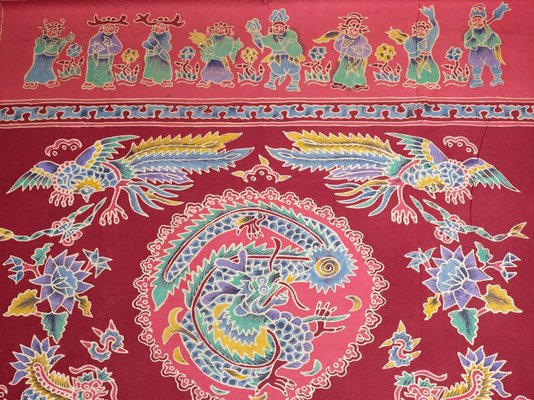Title
Altar cloth (tok wi)
circa 1930
Artists
Unknown Artist
-
Details
- Place where the work was made
-
Pekalongan
→
Central Java
→
Java
→
Indonesia
- Cultural origin
- Peranakan Chinese
- Date
- circa 1930
- Media category
- Textile
- Materials used
- cotton, dyes; batik tulis
- Dimensions
- 101.0 x 104.0 cm (irreg.)
- Credit
- Gift of John Yu and George Soutter 2008
- Location
- Not on display
- Accession number
- 226.2008
- Copyright
- Share
-
-
About
Across Indonesia, Malaysia and Singapore communities of integrated heritage are known by the Malay word peranakan (descendent). Peranankan Chinese also known as Straits Chinese are personified by the Baba-Nonya (Grandfather-Grandmother). Generally, Peranakan Chinese communities are made up of the descendants of the marriage between Chinese men and local women, where the man’s religious beliefs remain dominant while the woman’s cultural traits prevail.
At the beginning of the 20th century four main Peranakan Chinese communities were linked by maritime routes from the island of Penang on the west coast of Peninsular Malaysia down to Malacca, then Singapore and Pekalongan on the north coast of Java. The first three communities are known to have produced beautiful silver ware, furniture, and embroidery yet they are not known to have produced batik. As such batik industries on the north coast of Java were central in the design, manufacture and supply of batik to the other three peranakan port communities.
Batik altar clothes often imitated the designs and auspicious motifs found in embroidered textiles imported from China. The upper part of this cloth is decorated with hand drawn batik images of the ‘Eight Immortals’, legendary figures from Chinese mythology, while in the lower half a dragon (symbol of the emperor) is encircled by phoenixes (symbol of the empress) and peony flowers (symbol of wealth).
